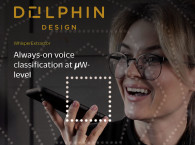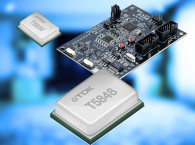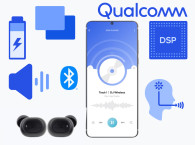
The small area of the new Cadence Tensilica HiFi 1 DSP reduces SoC cost, as required for TWS earbuds, hearing aids, Bluetooth headsets, smart watches and other wearables. It accelerates AI functions with neural network ISA and load/store to accelerate keyword spotting and other machine learning workloads for reduced energy consumption, while memory access-optimized ISA improves performance with small cache sizes. This makes the HiFi 1 DSP ideally suited for always-on use cases with sensor fusion or voice/face trigger, along with running codecs and DSP/AI algorithms for pre-processing and post-processing.
The HiFi 1 DSP’s ultra-low energy consumption extends the duration of voice communication and music playback, allowing always listening to voice commands with minimal impact to battery life. Efficient signal processing reduces energy and cycles for audio and speech pre- and post-processing, with an optional, low-latency vector floating point unit (VFPU) delivering higher FP throughput with lower energy consumption. This enables small form factor, low-cost consumer and mobile devices, as well as automotive and industrial devices, to offer increased functionality with low energy consumption.
A number of converging trends are driving the need for low-energy audio/voice capabilities in a small form factor. Increasingly, hearables and wearables are adopting the Low Complexity Communications Codec (LC3) standardized by the Bluetooth Special Interest Group (SIG) in 2020. In addition, consumer preference for hands-free and touch-free control is driving demand for always-on, or always-listening, devices that respond to voice wake-up commands, and appliances are even adopting these capabilities. Finally, to enable these devices and applications, a small form factor and longer battery life are crucial.
“The Low Complexity Communication Codecs (LC3 and LC3plus) co-invented by Fraunhofer help minimize energy consumption for battery-constrained Bluetooth devices. Fraunhofer and Cadence have a long history partnering on various codecs including LC3/LC3plus, which Cadence has optimized on its Tensilica HiFi DSPs,” says Manfred Lutzky, Head of Audio for Communications department at Fraunhofer IIS. “We’re pleased to see them building upon that experience with the new HiFi 1 DSP that is energy- and cycle-optimized for LC3 and LC3plus. The HiFi 1 DSP embodies the codec’s unprecedented ultra-low energy levels, which should bring relief to small battery hearable and wearable devices with added features and help accelerate the widespread adoption of LC3 and LC3plus.”
The HiFi 1 DSP delivers ultra-low energy encoding and playback of LC3 and other Bluetooth codecs and ultra-low energy keyword spotting for voice wake-up, all in the smallest footprint HiFi DSP. Compared to the HiFi 3 DSP, one of the most popular audio DSPs in the industry for these target applications, the HiFi 1 DSP offers 11% to 16% lower area, 60% to 73% greater cycle and energy efficiency for ML-based wake word or keyword spotting and person detect applications. It also offers greater than 18% cycle efficiency and 14% energy efficiency for LC3 decoding.
“The HiFi 1 DSP from Cadence significantly lowers the energy required to run the always-on class of AI applications, such as the TensorFlow Lite Micro (TFLM) networks, speech wake word and person detect, enabling battery-constrained devices to run for longer lengths of time,” says Pete Warden, technical lead of TFLM at Google. “Cadence and Google have long collaborated on TFLM, and we are excited to continue the collaboration as Cadence pushes the boundaries of energy and performance further.”

According to Cadence, special instructions including arithmetic coding for LC3 encode and decode make the HiFi 1 DSP currently the most energy-efficient DSP for Bluetooth LE Audio, while instructions for ITU-T3GPP-standardized 2019 BASOPs accelerate speech codecs and run them with high energy efficiency, increasing talk time.
“HiFi DSPs enjoy wide adoption in current-generation TWS earbuds and Bluetooth headsets,” says David Glasco, vice president of research and development for Tensilica IP at Cadence. “The advent of LC3 and wider market trends set the stage for next-generation hearables to offer a superior user experience and longer battery life. With many speech and voice algorithms migrating towards AI, we’re also seeing vastly expanding use cases for analytics and better sound quality in TWS earbuds. The compact HiFi 1 DSP enables these new use cases with ultra-low energy consumption, bringing to the mass market always-on and always-listening capabilities that were until now the privilege of premium products.”
www.cadence.com/go/HiFi-1






